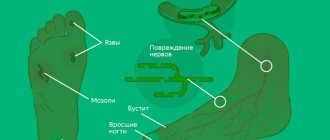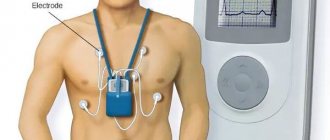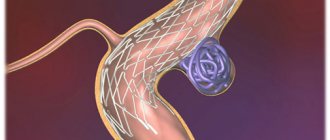Infusion therapy at the Paracelsus clinic, Sergiev Posad, Alexandrov
ATTENTION:
Online consultations with doctors (more than 18 specialties) are available.
Infusion therapy (intravenous drip)
- a method of treatment based on the introduction of solutions into the bloodstream in order to ensure the patient’s recovery or improve his condition. Depending on the clinical situation, the infusion solution should contain the appropriate active pharmaceutical ingredient.
Infusion therapy
– an integral part of the complex treatment of urgent conditions and chronic diseases of the internal organs of the human body. The doctor determines the course of infusion therapy individually for each patient.
Goals of fluid therapy
— the main goal of infusion therapy is the rapid and effective restoration of central and peripheral hemodynamics, correction of rheological parameters of the blood, acid-base and electrolyte balance, hemostasis system, removal of toxic waste products of pathogenic microorganisms and components of impaired metabolism, providing energy to the vital functions of internal organs.
What is infusion therapy used for?
Infusion (transfusion) therapy - used in all cases when the body is sick and also as a prophylaxis before and after illness: after colds, bronchitis, flu, stress, flights, for chronic fatigue, apathy, intoxications of various origins - for example, intoxication after viral infections infections.
General strengthening drips are indicated for people with chronic fatigue syndrome, before and after surgical treatment.
Improvement of the functional activity of the body is facilitated by complex droppers with vitamins, which work perfectly at the cellular level.
It is impossible to achieve an ideal balance of vitamins in the body when consuming foods. This is prevented by several factors - insufficient amounts of vitamins supplied with food, and often - disruption of the gastrointestinal tract
An effective alternative is intravenous infusion therapy, which involves the introduction of a complex of amino acids, vitamins and beneficial microelements intravenously for restoration (rejuvenation) of the body or immunocorrection.
Droppers to strengthen the body are prescribed to patients with metabolic disorders. They are prescribed for mental fatigue, frequent stressful situations, and energy depletion of the body.
They give energy, improve the functioning of skeletal muscles, and relieve muscle spasms. They are actively used by people leading a healthy lifestyle.
Give me an IV!
“Doctor, why weren’t they prescribed IVs for me? You stuff them with pills, but don’t treat them.” Such remarks from patients are not uncommon. The vast majority of our compatriots, especially middle-aged and elderly people, unquestioningly believe in the healing power of infusions and happily provide their veins for traumatic manipulations. At the same time, in the West, infusion therapy is used only in exceptional cases. Let's figure out which tactics are optimal.
Subtleties of introduction
A drip, or intravenous drip infusion, is a method of delivering various solutions, usually of an impressive volume (100–500 ml) directly into the blood. This type of drug administration gained particular popularity in Soviet medicine in the second half of the last century, and for good reason.
Types of infusion therapy
Anti-inflammatory infusion therapy
with analgesic effect
. Relief of pain of various types (headaches, pain due to osteochondrosis, etc.) as a result of infusion therapy is explained by the fact that the drugs quickly enter the blood and saturate the tissues with oxygen and glucose.
For successful treatment, an infusion therapy system can be used. For severe pain attacks, the following can be administered: analgesics, decongestants, anti-inflammatory, sedatives, muscle relaxants (for muscle relaxation). Combinations of these drugs can be different; the optimal one is selected by a pediatrician, therapist, neurologist or physiotherapist.
Antibiotic therapy and infusion therapy.
Intravenous antibiotics provide rapid action of these drugs, which is extremely important in some situations. When drugs are injected directly into the bloodstream, they reach the site of infection very quickly and begin to act instantly. In contrast, drugs taken orally are first absorbed in the intestines and only then begin to fight the infection. Intravenous antibiotics guarantee a quick effect.
Dropper to support the heart and blood vessels
The circulatory system of the heart wears out quite quickly, which inevitably leads to pathologies of the heart - the most important organ of the human body.
- Droppers for the protection of the heart and blood vessels
- Droppers to restore heart rate
- Droppers for coronary heart disease and to relieve angina pectoris
- Treatment of cardiovascular failure
Droppers to support the heart and blood vessels are simply necessary, because with their help you can quickly restore the structure of tissues and walls, restore the tone of blood vessels and saturate the organs with useful substances.
Droppers that support the functioning of the heart and blood vessels are successfully prescribed for the following symptoms:
- pain in the heart or behind the sternum;
- cardiac abnormalities or interruptions in heart function, palpitations, irregular pulse);
- shortness of breath;
- general physical weakness, occasional weakness in an arm or leg;
- severe dizziness or headaches;
- temporary speech or vision impairments;
- high blood pressure;
Dropper to improve cerebral circulation.
Problems with blood circulation in the brain are not only dizziness and memory impairment, but also impending atherosclerosis, vascular spasms and strokes. That is why cerebral vessels need timely treatment. Droppers can have the desired effect just a few minutes after the start of administration, and the components are absorbed almost completely.
Used to improve cerebral circulation
- antiplatelet agents that prevent the formation of blood clots;
- nootropics that improve metabolic processes in the head;
- alpha-blockers, which dilate blood vessels and accelerate cellular metabolism;
- antispasmodics;
- combined means.
They stimulate cellular metabolism and effectively restore the health of blood vessels and brain tissue. Thanks to this action, these drugs promote normal blood circulation, improve attention and concentration, promote high mental activity, and are effective after strokes.
Droppers that cleanse the body, detoxifying droppers.
These are droppers containing drugs that help remove toxins from the body (for allergies, obesity, drug poisoning, food and toxic poisoning, polluted environment, smoking, overeating, and other negative effects on the body). The positive effects are as follows:
- removal of intoxication, removal of toxins and wastes
- liver cell regeneration
- improvement of quality of life, activation of mental activity
- eliminating chronic fatigue syndrome, relieving stress and nervous tension
- getting rid of insomnia
- rejuvenation of the body from the inside
- improving skin condition, external beauty and eliminating signs of aging
The use of IVs in the treatment of complications of diabetes mellitus.
Intravenous administration of drugs can also be carried out during the planned treatment of patients with diabetes. For this purpose, drugs are used that act directly on the vascular wall, improving microcirculation and metabolic processes in tissues.
Indications for the use of drugs for diabetes mellitus:
- Diabetic polyneuropathy.
- Micro- and macroangiopathy.
- Chronic hepatitis.
- Hyperlipidemia and atherosclerosis.
- Droppers are placed for 10 to 20 days, and then they switch to taking the drug in tablets.
Medical
Actovegin
The drug is a hemoderivative obtained by dialysis and ultrafiltration.
It contains 30% organic compounds (amino acids, lipids, etc.), as well as trace elements. For osteochondrosis, droppers with Actovegin are prescribed to improve trophism and stimulate the processes of regeneration of damaged tissues.
The drug stimulates the active consumption of oxygen and glucose, thereby increasing the energy potential of the cell and regulating the metabolism of neurons. Improving oxygen diffusion in neuronal structures helps reduce the severity of trophic disorders.
Dropper with Actovegin
Actovegin stimulates peripheral microcirculation, vasodilation (expansion of the lumen of blood vessels), aerobic energy exchange of vessel walls and releases prostacyclin. Thanks to this action, swelling of the affected area, hypoxia and microcirculation disorders in the area of compression of the nerve root are reduced.
For osteochondrosis, Actovegin can be administered intravenously using a dropper. The dosage ranges from 250 to 500 ml per day. The recommended infusion rate is approximately 2 ml per minute. The full course consists of 10-20 infusions. Since there is a potential risk of developing an anaphylactic reaction, it is better to conduct a test before the procedure.
Contraindications
Droppers with Actovegin are not prescribed for:
- hypersensitivity to the components of the drug;
- decompensated heart failure;
- pulmonary edema;
- anuria;
- oliguria;
- tendency to edema.
Trental
For osteochondrosis, this drug is prescribed to improve microcirculation and rheological properties of blood. It has an indirect vasodilating effect and helps eliminate circulatory disorders.
Trental injection solution
The injection solution can be administered using a dropper or a jet. Ringer's solution, 5% glucose solution or 0.9% sodium hydrochloride solution are used as a solvent for preparing the infusion composition. The dose of trental ranges from 100 to 600 mg 1-2 times a day. The duration of the infusion is determined depending on the dosage and volume of the injected product. The minimum duration of administration of 100 ml of trental is 1 hour. If the symptoms of osteochondrosis are severe, due to significant circulatory impairment, a 24-hour infusion may be prescribed. In such cases, the dosage is determined at the rate of 0.6 mg per hour per 1 kg of patient body weight. Regardless of the severity of the osteochondrosis clinic and the patient’s body weight, the daily dose cannot exceed 1200 mg. As a rule, the maximum volume of solution for infusion is 1.5 liters per day.
Contraindications
Droppers with trental are not prescribed for:
- bleeding tendency;
- hemorrhagic stroke;
- retinal hemorrhage;
- pregnancy.
The drug is prescribed with caution if the patient has the following diseases and pathological conditions:
- atherosclerosis of coronary and cerebral vessels in severe form;
- arrhythmia;
- cardiac ischemia;
- gastrointestinal diseases;
- frequent fluctuations in blood pressure
Eufillin
The product improves peripheral and cerebral circulation, eliminates muscle spasms, and has an analgesic effect. Its use in osteochondrosis is mainly due to the last two properties.
Eufillin capsules for dropper
For drip administration, a solution of aminophylline (10-20 ml) is diluted with an isotonic solution of sodium hydrochloride (100-150 ml) 100-150 ml. The rate of administration should be from 30 to 50 drops per minute. The maximum single dose of the drug is 0.25 g, daily dose is 0.5 g.
Contraindications
Droppers with aminophylline for osteochondrosis are not indicated for the following concomitant diseases:
- hypertension or hypotension;
- heart pathologies;
- epilepsy;
- pulmonary edema;
- thyrotoxicosis;
- renal or liver failure;
- tendency to bleed;
- hypersensitivity to the drug.
Vinpocetine
Droppers with vinpocetine are prescribed for cervical osteochondrosis. This drug helps to correct cerebral circulatory disorders, which occur quite often in this form of the disease. Vinpocetine dilates blood vessels and has an antihypoxic effect due to increased transport of oxygen and glucose. However, it does not have a pronounced effect on the heart and peripheral circulation. The active substance selectively affects the affected areas and improves brain metabolism.
For cervical osteochondrosis, vinpocetine is administered using a dropper. The maximum infusion rate is 80 drops per minute.
The initial dosage should not exceed 20 mg per day, or 2 ampoules. The concentrated product is diluted with a solution for intravenous administration.
In the future, the dose can be increased to 50 mg per day. Course duration is 10-14 days.
Ozone drippers
For osteochondrosis, droppers with ozonated saline solution are also quite effective. In this case, a composition with a fairly low ozone concentration is used. This method provides a long-term effect on the internal environment of the body.
The procedure allows you to:
- normalize metabolic processes;
- improve microcirculation;
- restore oxygen transport;
- dilate blood vessels;
- reduce the severity of the inflammatory process;
- strengthen the immune system.
Drip administration of ozonized saline solution is carried out in two ways:
- infusion against the background of continuous bubbling - in this case, the solution remains saturated throughout the entire procedure;
- infusion with cessation of bubbling during the procedure - in this case, the dose that the body receives in 30 minutes is equal to 67% of the dose received with continuous bubbling.
Contraindications
Ozone drip administration is not prescribed for:
- acute phase of myocardial infarction;
- allergies to ozone;
- low blood clotting;
- internal bleeding;
- thyrotoxicosis;
- thrombocytopenia;
- hypotension;
- hypoglycemia;
- acute pancreatitis.
Carrying out infusion therapy
Intravenous infusions should only be carried out by a qualified specialist who is familiar with the characteristics of the administration of various substances, their combination and the possible reaction of the patient’s body. Particular attention is paid to the speed of administration of the infusion solution with dissolved agents. Trust your health only to active professionals. This will avoid adverse health consequences: hematoma, allergic reaction, pain and redness.
First, the injection site (usually the elbow) is treated with an antiseptic. The vein is prepared in the traditional way using a tourniquet and secured by tautening the skin. The needle is inserted when the hand is clenched into a fist; The tourniquet is removed when blood appears in the needle cannula. Next, the infusion system is attached to the cannula and the clamp opens, allowing the fluid to flow. The speed of the drops is adjusted depending on the doctor's recommendations.
During the procedure, a nurse monitors the process. At the end of the procedure, the clamp is closed, the needle is carefully pulled out of the vein using a cotton pad moistened with an antiseptic. Typically, the IV site is bandaged to stop bleeding.
What is included in the dropper?
"Esperal", coding and other methods of treating alcoholismAlcoholism is a chronic disease caused by the systematic intake of drinks containing ethyl alcohol (ethanol), characterized by craving for them, leading to mental and physical disorders and disrupting the social relationships of the person suffering from this disease. Like any chronic disease, alcoholism occurs with periods of remission, when the patient is sober, and relapses, when he begins to abuse alcohol again. In order to prevent alcoholic breakdowns and thereby increase the duration of sober intervals, our clinic uses various methods of anti-relapse treatment of alcoholism. The importance of these treatment methods lies in the fact that during remissions the patient not only maintains his physical and mental health, but also gains invaluable personal experience of interacting with the outside world without the help of alcohol. Over the entire period of work, our specialists as narcologists and psychotherapists have accumulated extensive experience and developed a number of proprietary methods for treating alcohol addiction. Each patient of our clinic can count on a competent and professional selection of an anti-alcohol treatment method that is suitable specifically for him. In total, our specialists have about 15 different methods of anti-relapse treatment in their arsenal. What methods of anti-relapse treatment exist? According to the principle of influence, all anti-relapse techniques can be divided as follows: administration of drugs containing disulfiram, coding from alcohol using suggestion and hypnosis, administration of drugs containing naltrexone. Treatment with drugs containing disulfiram The drug disulfiram itself has been known for a long time, is produced by various pharmaceutical companies and is part of drugs such as Esperal, Antabuse, Teturam, Lidevin and others. The action of these drugs is based on disruption of the chemical reaction of the biotransformation of ethyl alcohol in the human body. As you know, alcohol (ethanol) begins to enter the blood within a few minutes after its consumption and the body immediately begins to process it into other chemicals. This process involves the stomach, liver and some tissues of our body that have specific enzymes. The main organ responsible for processing ethanol is the liver, which, with the help of the enzyme alcohol dehydrogenase, is able to quickly process it into acetic acid aldehyde (acetaldehyde). The resulting substance is very toxic to our body - it affects both brain cells and liver cells, as well as many other organs and systems. At the next stage, acetaldehyde is processed into acetic acid, which in itself is no longer toxic at all and is involved in many chemical reactions occurring in the human body, and in turn breaks down into harmless products carbon dioxide and water. Thus, our body protects itself from the toxic effects of both ethanol itself and the much more toxic acetaldehyde. Disulfiram, interfering with this process, blocks the processing of acetaldehyde, which leads to its accumulation in the body with the development of the following serious consequences: a drop in blood pressure up to collapse, angina pectoris and acute myocardial infarction, confusion, the development of hallucinations and seizures, cerebral edema and stroke, death associated with a fatal cardiac arrhythmia. Contraindications to the use of drugs containing disulfiram: alcohol withdrawal syndrome, coronary heart disease, myocarditis, diabetes mellitus, acute renal failure, acute liver failure, pregnancy, mental disorders. Chronic alcoholism can be treated with drugs containing disulfiram in our drug treatment hospital or at the patient’s home. Making an appointment with a doctor or calling a narcologist at home is carried out around the clock by calling (812) 306-23-23 and. Implantation (filing) of Esperal tablets Implantation of the drug Esperal in the form of sterile tablets, commonly known as “filing,” is carried out in the muscles of the buttocks, back or abdomen, depending on the requirements of the drug manufacturer. Subsequently, the drug is gradually absorbed with constant maintenance of a certain concentration of disulfiram in the blood. The procedure is carried out with strict adherence to aseptic measures; disposable medical instruments are used. Implantation of the drug "Esperal" is carried out with local anesthesia and does not cause any discomfort. The drug is produced only for drug treatment hospitals. It is preferable to remove postoperative sutures in a hospital, since only a doctor can assess the condition of the skin at the site of Esperal implantation, the absence of infection and inflammation, as well as assess the patient’s mental state in the post-withdrawal period and give qualified recommendations. Advantages of the Esperal binder: the possibility of administering the drug for long periods from 1 year to 5 years, no need for daily monitoring of the drug intake, gradual entry into the body. Disadvantages: invasiveness (introduction with damage to the skin), risk of developing infectious complications if the injection site is not properly cared for, slight cosmetic defect of the skin at the injection site. You can carry out implantation (filing) of the certified drug “Esperal” in our hospital “Petersburg Narcologist” or at the patient’s home - it is possible for a narcologist to visit your home throughout St. Petersburg, the nearest and remote suburbs. Make an appointment and call a doctor by phone and 8 (812) 947-48-14. The drug "Esperal-gel" The drug "Esperal-gel" is a dispersed system containing disulfiram in gel form for intramuscular administration. The injection is made into the subscapular region, after which infiltration of the underlying tissue occurs with the formation of a disulfiram depot. The duration of action of the drug depends on the degradation time of the carrier on which Esperal is attached. The drug is available only for hospitals. The advantages of treatment with Esperal-gel: ease of administration, the possibility of administering the drug for long periods from 1 year to 5 years, no traces on the skin after administration. Disadvantages: pain (the drug is administered under local anesthesia). You can perform an injection of the well-proven drug “Esperal-gel” in our clinic “Petersburg Narcologist” or at the patient’s home. Our clinic’s narcologists make house calls to all districts of St. Petersburg, the nearest and remote suburbs. Making an appointment with a doctor or calling a narcologist is carried out around the clock by phone, etc. The drug "Tetlong-250" "Tetlong-250" is a highly purified combined drug disulfiram with tranquilizing and antidepressant activity, used in the treatment of alcohol dependence. A distinctive feature of the “Tetlong-250” procedure is that after injection the drug forms poorly soluble microcrystals that are poorly dissolved by the neutralizing drug, which ensures the effect of irreversibility of the procedure. The concentration of the drug in the blood is maintained for three or six months. The drug "Tetlong-250" is injected intramuscularly into the gluteal muscle. Advantages of treatment with Tetlong-250: ease of administration, accompanying tranquilizing and antidepressant effects, absence of marks on the skin after administration. Disadvantages: irreversibility (although some patients and their relatives evaluate this property exclusively on the positive side). You can undergo alcoholism treatment with Tetlong-250 in our drug treatment hospital or at the patient’s home. Making an appointment with a doctor or calling a narcologist at home is carried out around the clock by calling (812) 306-23-23 and. Tablets "Esperal" 500 mg Tablets "Esperal" 500 mg are sold in the pharmacy chain with a doctor's prescription. The tablet form of "Esperal" for oral administration is prescribed after consultation with a narcologist according to an individual regimen. The effect of the tablets lasts one day after taking the drug. Advantages of the tablet form "Esperal": availability, the ability to quickly stop taking the drug if side effects develop, non-invasiveness (the administration does not damage the skin), Disadvantages of the tablets "Esperal": difficulty in controlling the intake of the drug, frequent refusal of patients to take the medicine, short period of action of the tablets. Despite the significant disadvantages of oral administration of Esperal tablets, this method is considered preferable for some categories of patients with chronic alcoholism. You can undergo a preliminary consultation with a narcologist aimed at identifying indications and contraindications for treatment and get a prescription for Esperal in our clinic. Making an appointment with a doctor is carried out by phone, and. Coding for alcoholism using suggestion and hypnosis Coding for alcoholism is a group of psychotherapeutic methods using suggestion and hypnosis, the goal of which is to form in the patient a stable associative connection between alcohol and negative experiences and a firm and long-term commitment to complete sobriety. The coding mechanism in alcoholism is based on the process of accelerated degradation and destruction of interneuronal synaptic connections in the brain centers responsible for the pathological craving for alcohol and the formation of addiction, and the restoration of such connections in the centers responsible for a positive mood and motivation for a sober lifestyle. To enhance the coding effect, additional effects can be used, such as electromagnetic, photostimulating, acupuncture, enzymatic-medicinal and others. Encoding validity periods range from 1 year to 5 years. Three stages of the coding process: First stage: an anamnesis of the life and illness of an alcohol-dependent person, the degree of alcoholism is compiled, possible contraindications to coding are determined, the level of motivation and the patient’s commitment to sobriety are discussed. Second stage: the patient’s personal characteristics, the causes of alcohol dependence are examined, attention is focused on problems associated with deteriorating health, on the most emotionally significant troubles that interfered with the patient’s social and personal life due to alcohol abuse, and which he would like to eliminate further. The third stage: a special psychotherapeutic effect on the patient, during which the patient experiences an acute subconscious experience of the negative aspects of alcoholism, which provokes a psychological rejection of alcohol and gives a firm and long-term commitment to complete sobriety. The installation lasts for the time that the patient himself has previously determined for himself. What methods are used when coding? One of the most effective methods of psychological influence on a person’s subconscious is “Ericksonian” hypnosis, supplemented by certain highly effective methods of neurolinguistic programming (NLP). Its popularity and effectiveness have been proven during a coding session for alcohol addiction. The specialists of our clinic “Petersburg Narcologist” use several coding methods for alcohol addiction in their work. Our team's original developments are also used. Our clinic’s specialists will always help you decide on the alcohol coding technique. You can make an appointment with a doctor and coding by calling in St. Petersburg, (812) 306-23-23 and. Acupuncture programming Acupuncture programming is in-depth coding with point-by-point impact of acupuncture needles on biologically active points of the body. Coding takes place with the patient immersed in a trance state, which promotes deep fixation of the code and the development of persistent indifference to alcohol. During the coding process, the therapeutic effect is further enhanced by elements of reflexology. Reflexology also allows you to eliminate various psycho-emotional disorders, such as depression, irritability, sleep disturbances, increased anxiety and excitability of the nervous system, and headaches. Pre-registration for acupuncture programming for alcohol dependence is carried out by phone in St. Petersburg, (812) 306-23-23 and. Enzymatic coding (Afghan) Enzymatic coding for alcoholism is carried out with the subcutaneous injection of a highly purified enzyme into the area of the bridge of the nose, rich in vessels connected to the vessels of the brain. This method of administration avoids inactivation of the sensitive enzyme as it passes through the liver and goes directly to the pituitary region of the brain, where it binds to endorphin receptors and helps reduce the physiological craving for alcohol. When the regime of sobriety is violated and alcohol enters the body, the enzyme changes its isomeric structure and potentiates vascular (strokes) and mental (hallucinations) disorders. To carry out enzymatic (Afghan) coding, you must wait 7 days of absolute sobriety and make an appointment with a doctor in advance by calling: 8 (812) 676-15-15, etc. Preparations containing Naltrexone Naltrexone is a blocker of mu-opiate receptors in the brain, which are responsible for feelings of pleasure and pathological craving when drinking alcohol. The introduction of this drug allows you to break the conditioned reflex chain “alcohol-pleasure” and thus completely stop or significantly reduce the duration and number of binges. Naltrexone tablets and capsules for oral administration are sold in pharmacies with a doctor’s prescription and are prescribed after consultation with a narcologist according to an individual regimen. The effect of the medicine lasts one day after taking the drug. Advantages of the tablet form of Naltrexone: availability, the ability to quickly stop taking it if side effects develop, non-invasiveness (the administration does not damage the skin). Disadvantages: difficulty in controlling the drug intake, frequent refusal of patients to take the drug, short duration of action. A preliminary consultation with a narcologist is carried out in our clinic. Make an appointment with a doctor by phone, etc. Injection of the drug "Vivitrol" The drug "Vivitrol" is the latest development of American scientists for the anti-relapse treatment of alcoholism at all stages of the disease - both initial and deep in its development, that is, those that were previously recognized as absolutely unpromising in terms of obtaining stable remission (absolute sobriety). "Vivitrol" is a powder that is diluted immediately before administration of the drug. The injection is made with a solution in the form of a cream-colored emulsion that contains naltrexone. The drug is administered only by a narcologist intramuscularly into the gluteal muscle and immediately enters the bloodstream. A special form of the drug - microspheres - ensures the maintenance of a stable concentration of the active substance in the patient’s body for a month. The very introduction of the drug "Vivitrol" is a "medicinal" part of the "Point of Sobriety" program - a coherent system based on the interaction of pathogenetic therapy (i.e. aimed at the direct mechanisms of addiction) with high-quality psychotherapeutic support aimed at teaching the patient skills ensuring and maintaining sobriety. Advantages of the drug "Vivitrol": ease of administration, low toxicity, irreversibility, absence of marks on the skin after administration. Disadvantages: short validity period (1 month). Vivitrol does not cause mental or physical dependence; the drug has all the necessary quality certificates and is included in the register of medicines in Russia. Treatment is carried out by specialists who have been trained at the drug manufacturer’s premises. You can undergo a preliminary consultation with a narcologist and treatment with Vivitrol in our narcological hospital. Pre-registration for an appointment with a doctor can be made by calling: 8 (812) 676-15-15, etc. Conclusion And, in conclusion, I would like to note that all anti-relapse procedures for alcoholism do not cancel the psychotherapeutic support of the patient, but make it extremely necessary. With experienced specialists from the Petersburg Narcologist network of clinics, you can undergo anti-alcohol treatment using one of the 15 most suitable methods for the patient and receive qualified psychotherapeutic post-treatment support. If you find it difficult to choose a treatment method, our clinic specialists will always help you at a mandatory preliminary consultation. The purpose of a preliminary consultation with a narcologist is to identify indications for the procedure and possible contraindications, determine the duration of the procedure, inform the patient about the consequences of violating the sobriety regime and prepare the necessary medical documentation. Anti-alcohol treatment can be performed in our clinic at the address: St. Petersburg, st. Bolshaya Pushkarskaya, 20 Some of the anti-alcohol addiction treatment methods can be carried out at the patient’s home after withdrawal from binge drinking by calling our narcologist on multi-line phones in St. Petersburg, and 8. “Petersburg Narcologist” - a sober outlook on life!
Read more
Infusion therapy at Paracelsus Medical Center
Before intravenous infusion, a specialist from the Paracelsus Medical Center must conduct an examination, study the patient’s condition and his complaints. This allows us to exclude the presence of contraindications to placing an IV. If you have chronic pathologies that are unknown to the doctor, or allergic reactions, be sure to inform the specialist or provide the medical documentation you have on hand.
During the intravenous infusion, the nurse is nearby and monitors the patient’s well-being.
Infusion therapy allows you to quickly restore damaged mechanisms, normalize the functional activity of internal organs, cleanse the blood and the body as a whole of toxins that are formed as a result of the development of infections, drug residues, hormones and waste.






